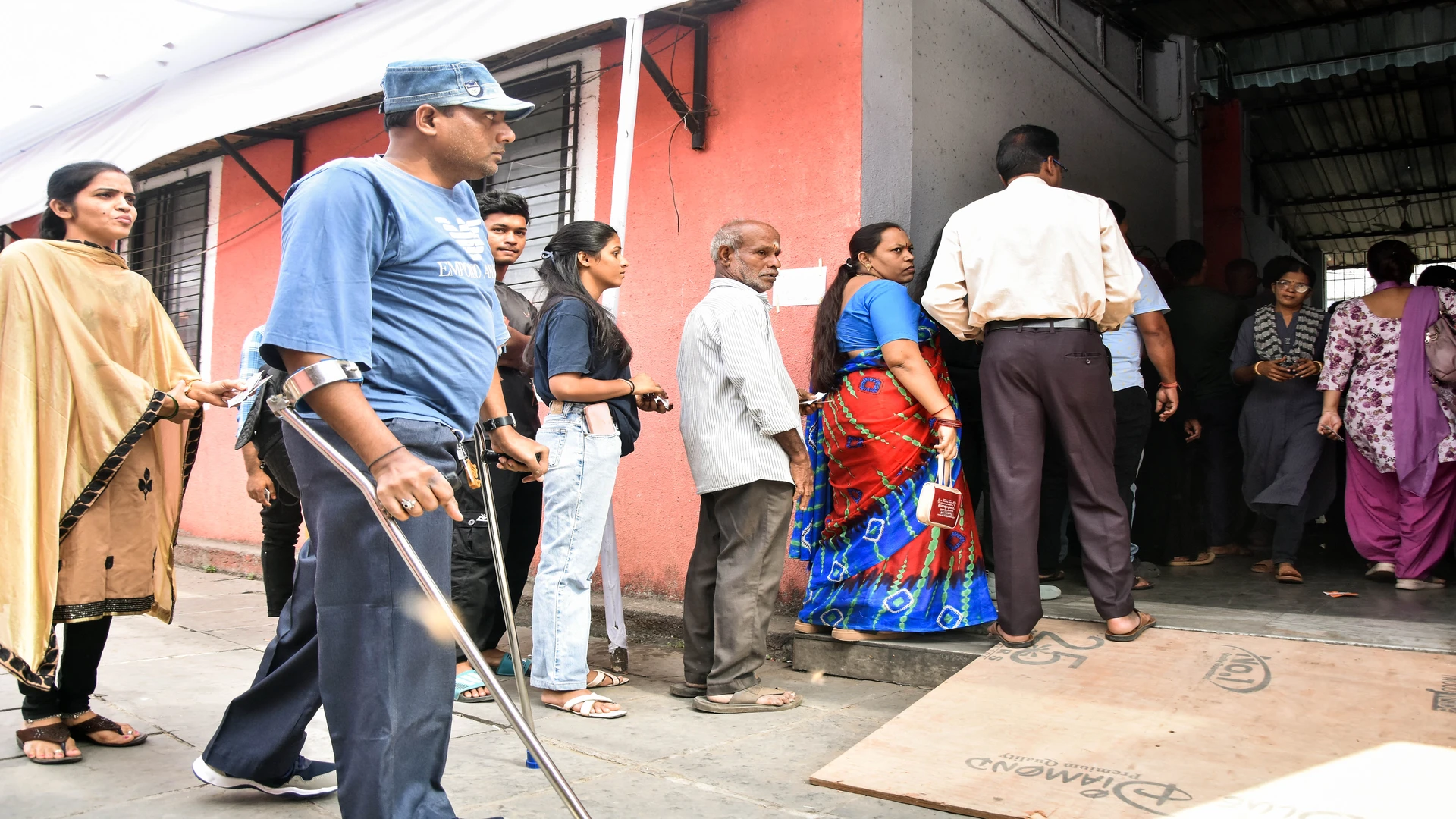Polling for Maharashtra Assembly elections is over. Come Saturday (November 23), we will have an idea of which alliance—Mahayuti or Maha Vikas Aghadi (MVA)—will form the next government in the state.
Maharashtra recorded a voter turnout of 58.41 percent, according to the Election Commission’s Voter Turnout App’s provisional data at 8 pm. Mumbai, notorious for its indifference to voting, once again reported a dismal turnout.
In the previous two Assembly polls, voter turnout in Maharashtra’s capital barely crossed the 50 percent mark. In the 2019 elections, Mumbai recorded a turnout of 50.67 percent, a slight decline from 51.21 percent in 2014.
Why does ‘Maximum City’ fail to vote in large numbers? Here’s a closer look.
Mumbai Voter Turnout in 2024
Approximately 1.02 crore voters were eligible to cast their votes in Mumbai, comprising 54.67 lakh males, 47.62 lakh females, and 1,082 transgender voters. Both districts of Mumbai reported poor voter turnout figures.
While Mumbai City recorded a turnout of 49.07 percent, Mumbai Suburban fared slightly better at 51.92 percent, according to Election Commission data at 8 pm. The lowest voter turnout in Mumbai City was observed in Colaba and Mumbadevi constituencies, at 41.64 percent and 46.10 percent, respectively. In Mumbai Suburban, Chandivali (47.05 percent) and Versova (47.45 percent) recorded the poorest turnouts, followed closely by Mankhurd Shivaji Nagar at 47.46 percent.
During the Lok Sabha polls earlier this year, urban apathy was evident in Mumbai, which reported a 52.4 percent voter turnout—a three percent drop from the 2019 elections. Despite the decline, the 2019 Lok Sabha elections marked the city’s highest voter turnout.
Efforts to Encourage Voting in Mumbai
Acknowledging the consistently low voter turnout, the Election Commission implemented various measures to encourage greater participation. The Mumbai district election officer urged businesses and establishments within Brihanmumbai Municipal Corporation (BMC) limits to provide paid leave on November 20 to allow employees to vote.
Polling stations were equipped with improved amenities, such as drinking water, seating arrangements, waiting rooms, fans, toilets, and wheelchairs, to ensure a smoother voting experience. During the Lok Sabha elections, voters had complained about the lack of basic facilities at some polling stations.
To raise awareness, the Election Commission organized voter education campaigns such as ‘Know Your Polling Station’ and appointed the municipal commissioner as the District Election Officer for both Mumbai City and Mumbai Suburban districts—a responsibility previously handled by district collectors.
To further incentivize voters, over 50 restaurants in Mumbai offered a 20 percent “Democracy Discount” on dine-in bills for those who voted.
Why Is Mumbai Disinterested in Voting?
Mumbai’s lack of enthusiasm for voting is not a recent trend. Before 2014, turnout in the city seldom crossed 50 percent. In the 1999 Assembly polls, the turnout was 44.9 percent, rising to 48.4 percent in 2004. It dipped again to 46.1 percent in 2009 before climbing to 51.21 percent in 2014, according to Mint reports.
While announcing the poll dates for Maharashtra and Jharkhand Assembly elections in October, Chief Electoral Commissioner Rajiv Kumar cited “urban apathy” as a significant factor behind low turnout. He emphasized that urban and youth indifference remains a pressing concern for the Election Commission.
Urban apathy affects not only affluent neighborhoods like Colaba and Versova but also slum areas like Mankhurd and Dharavi, albeit for different reasons. In affluent areas, events such as weddings and dissatisfaction with candidates were cited as reasons for low turnout. Veena Bakshi, a Versova resident and filmmaker, told the Times of India, “There is apathy about issues and a lack of good candidates.”
In slum pockets, disillusionment stems from unfulfilled promises and governance issues. Savitra, a homemaker in Annabhau Sathe Nagar, expressed her frustration: “Politicians visit during elections and ask for votes, but what’s the point? No one comes when there are no votes to exchange.”
Daily-wage workers in these areas also find it challenging to wait in long queues, and missing names in voter lists add to the disenchantment.
Also read: Mahayuti Leads, MVA Close: Exit Polls
Broader Urban Apathy in India
Urban apathy is not unique to Mumbai. Cities like Bengaluru and Lucknow also exhibited similar patterns during the Lok Sabha polls. Tikender Singh Panwar, a former deputy mayor of Shimla, wrote in an opinion piece for Deccan Herald, “Urban apathy is a manifestation of the depoliticized environment and the belief that ‘nothing will change.’ It reflects the informalization of employment sectors, making survival a daily struggle.”
With inputs from agencies.







